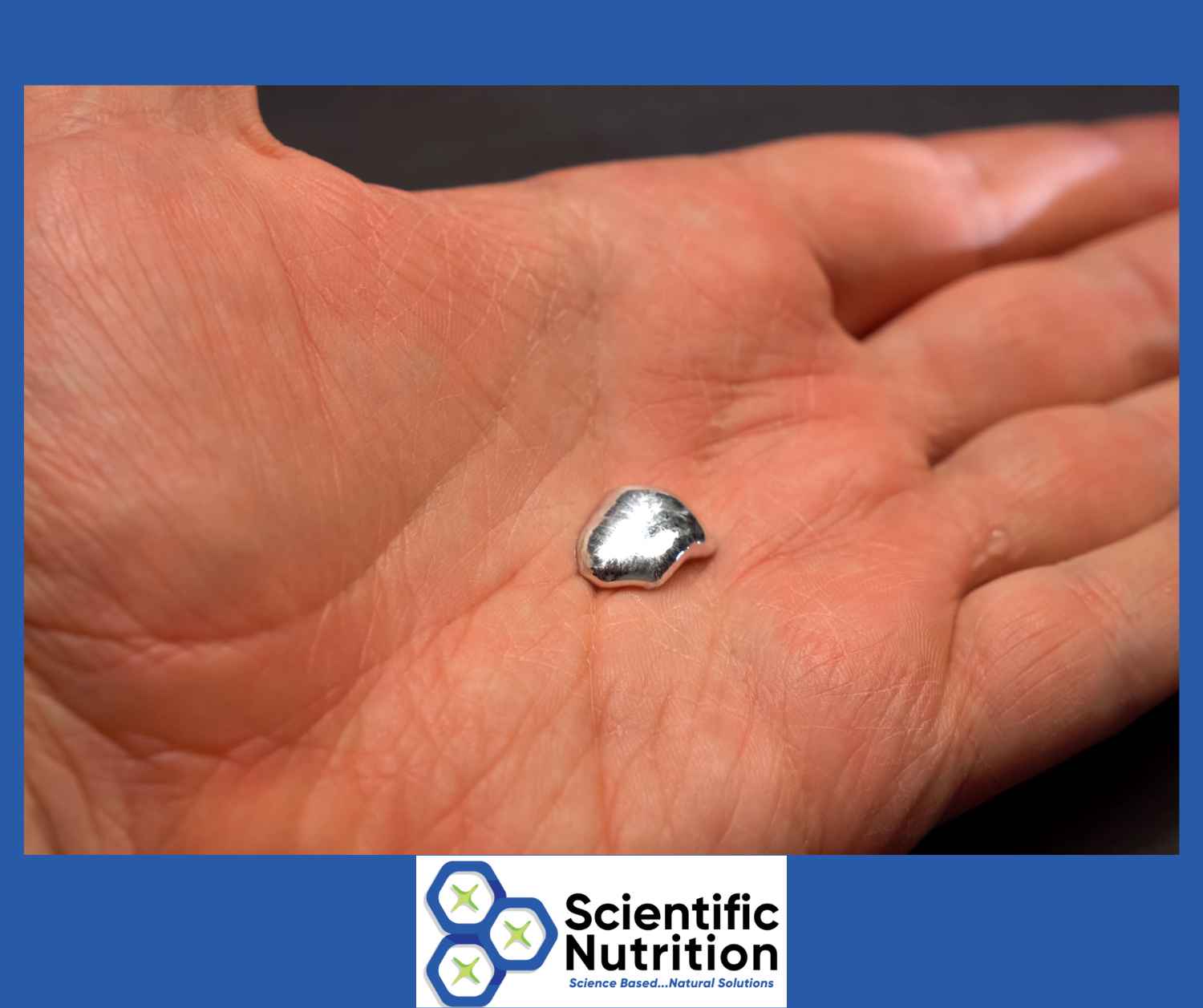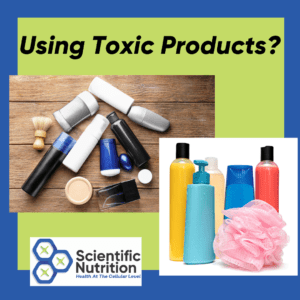Everything you must know about mercury toxicity
Why is mercury bad for you?
There are many questions that need to be addressed to keep you healthy and your mind clear of interfering heavy metals.
Can mercury kill you? Yes. In 1996 a chemistry professor at Dartmouth College laboratory died after spilling a few drops of highly concentrated dimethylmercury on the back of her gloved hand. During the next few months, she lost her ability to speak and walk eventually passing a year after exposure.
The Romans wrote of mercury toxicity over 2,000 years ago and we’ve all heard the phrase “mad as a hatter” coined after the use of dipping felt hats into mercury to form them. But what about today?
Let’s dig into why it is important to know if you have too much stuck in your tissues and brain!
Why do you need a mercury detox?
Mercury has no positive role in human health, but almost every one of us has some amount of mercury in our bodies. It can sneak into your body through various daily activities. It’s prevalent in air, water, and food. You simply can not avoid mercury exposure.
No one truly knows a safe level that does not hurt your health, we only have “safety standards”. The only way to keep yourself safe from mercury poisoning is to be aware, make a conscious effort to its exposure, and detoxify as much as possible.
This blog will help you understand the sources of mercury exposure, its impact on your physical and emotional health, and the best ways to get some natural detoxification.
Do you care about your health? If so, stick around.
Sources of mercury exposure and better alternatives
“Can I avoid mercury exposure 100%”?
No.
But these are the major sources of mercury exposure you must be careful about.
Toxic fish and seafood:
I know you love seafood and fish, but seawater contains a lot of mercury and your delicious fish bring seawater mercury to your plate.
Some aquatic critters absorb mercury from polluted waters. The sea floor scavengers such as crabs, and lobsters are actively eating these toxins along with chemical spill pollutants such as petroleum oil. Big fish such as tuna or halibut carry huge loads of mercury along with the accumulation from the fish they are eating.
You might unknowingly invite mercury into your body when you gratify in these tasty treats. If you still want to enjoy a rare meal of seafood, you can opt for lower-mercury seafood options, like shrimp and wild-caught salmon. Your best bet is Atlantic wild-caught, skinless, boneless sardines.
Environmental pollution:
Mercury floats around in the air and water due to industrial activities. Factories, power plants, and other human activities release mercury into the environment, which can travel far and wide. It finds its way into the air and eventually into us through the food chain.
Avoiding exposure to plants that work with iron mining, burning coal plants that are releasing 51 tons annually, and fertilizers is a must. The fumes or smoke do leach into the environment to be rained down upon us so we need to keep our detox pathways flowing.
I know that as an individual, you can’t change government policies or with industrialists, but still, you can choose to live in a green, eco-friendly environment. Use your buying power to shift the demand for cleaner food. Maybe you would consider forming or joining a group to push back and change regulations for your future health?
Dental amalgams:
Surprisingly, those “silver” fillings in our teeth contain mercury. Dental amalgams are overused and effective but slowly release small amounts of mercury vapor as you chew everything. These toxic vapors find their way into your brain to settle in. They later bind with aluminum to cause Alzheimer’s Disease.
Does that mean you should not get a dental filling?
No. Just consult with your dentist about mercury-free alternatives for future dental work such as porcelain or gold crowns.
Mercury thermometers
There were over 1,000 people who suffered from mercury toxicity due to broken thermometers in 1999. This was just a small sample of the damage they can do. One thermometer can not only harm a child severely who breathes the vapors, it is enough to contaminate a 20-acre lake.
Landfills and incinerators create an environmental hazard releasing at least 3.8 tons per year. Let’s not discount blood pressure gauges either.
Other sources of mercury toxicity
The fluorescent light bulbs above us, the light switches in some car trunks, batteries, contact solutions, nasal sprays, eye drops, and vaccines contain forms of mercury we need to avoid.
What level of mercury is safe?
You might be thinking, “If I can’t avoid mercury exposure, is there any safe level”?
Luckily, we have an answer.
In 2002 the EPA’s ( Environmental Protection Agency) maximum safe daily dose of methylmercury was just .01 microgram (mcg) per kilogram of weight over a LIFETIME!
This is 10 times less than what was needed to trigger symptoms of mercury poisoning in an adult at the time.
According to the U.S. EPA in 2024, the safe mercury dose is 0.1 mcg per kg or o.045 pounds of body weight. This is 10X higher than the amount they deemed safe 22 years ago!
Why? I highly doubt it is due to less toxicity in the population.
How much mercury is safe to eat in my fish?
Let’s calculate it. If you want to know a weekly limit, divide the number by seven. An adult weighing 150-pounds can supposedly ingest 6.75 mcg a day or 47.25 mcg per week.
Tuna has .689 parts per million (ppm) per gram. There is 168 grams in 6 ounces. If you are this 150-pound person eating an average 6 ounce piece of tuna, you are getting 115.75 mcg at once. Calculated as .689 ppm per gram X 168 grams of fish = 115.75 mcg.
How about Snapper (.244 ppm) or Halibut (.241)?
150# person – .241 ppm per gram X 168 grams/6 ounces = 40.49 mcg. It’s close to the weekly limit of 47.25
200# person – can have the same 40.49 mcg but tolerate 9 mcg a day or 63 mcg per week.
Your size and portion matter!!! One tuna fish sandwich per week is a huge amount for a 45-pound child.
Another important thing you need to know about the toxicity of mercury is its different forms including;
- Elemental mercury, which is found in liquid metal form. At room temperature, this can evaporate to become an invisible, odorless toxic vapor. When heated, it is an odorless, colorless gas.
- Inorganic mercury compounds combined with sulfur or oxygen to form compounds or salts. They are the environmental sources of industrial pollution.
- Organomercury compounds like methylmercury are highly toxic. It is primarily found in certain fish, like tuna. It is known for its bioaccumulative nature, meaning it builds up in living organisms over time and poses a higher risk of toxicity.
Impact of mercury toxicity on physical, mental, and emotional health
Mercury, one of the most “contagious” heavy metals, seriously disturbs your health.
Physical health symptoms of mercury toxicity-
Cardiovascular Effects:
Mercury disrupts the heart’s rhythm. This can lead to cardiovascular issues, affecting how our heart pumps your blood. Your heart is the most important and busy organ in your body. If mercury is a hurdle in its function, you are in big trouble.
Immune system suppression:
Your health depends on your immune system; if it is strong, you can fight diseases. If mercury toxicity makes it weak, it will make it harder for your body to fight off invaders. This weakened immune system can leave you more vulnerable to illnesses.
Mental health implications of mercury toxicity-
Cognitive decline and memory issues:
Mercury poisoning wrecks your mental health. Long-term exposure may contribute to cognitive decline. It affects how you think and remember things. If toxicity is high it’s like having brain fog that makes daily life more challenging until full-on Alzheimer’s Disease or dementia happens.
Studies looking into the connection between autism being linked to mercury poisoning as well. Ironically a form called thermerisol is still in childhood vaccines. Similar to lead poisoning, symptoms are learning disabilities, shortened attention spans, and poor motor skills in children.
Mood disorders and depression:
Do you often feel a bit down? Mercury toxicity can be the reason.
Studies suggest a link between mercury exposure and mood disorders. Too much mercury in the system can throw off the balance of neurotransmitters affecting your mood and potentially leading to bouts of sadness or depression.
Stress and anxiety:
Too much mercury in the body disrupts your emotional health too. It causes stress and anxiety and makes your everyday tasks more overwhelming.
Mercury toxicity can impact your overall quality of life to the point you stop enjoying your life.
A healthy body and mind becomes your dream…that is impossible to achieve. But wait…I have something for you.
Natural ways to detox mercury:
Foods that aid in mercury toxicity detoxification
a. Cilantro and parsley:
These culinary herbs are rich in compounds like chlorophyll and polyphenols. These natural compounds facilitate the elimination of heavy metals from the body. This includes cilantro and parsley in your diet may help to support mercury detoxification.
b. Spirulina and chlorella:
Spirulina and chlorella are algae-based superfoods that contain bioactive compounds like chlorophyll, peptides, and polysaccharides. These compounds have the potential to bind to and remove heavy metals. Including these in your diet could offer a natural remedy to mercury poisoning.
c. Nutrient-rich, anti-inflammatory diet:
Are you eating food full of antioxidants, vitamins, and minerals? Nutrient-rich food supports the body’s detoxification pathways.
Antioxidants fight oxidative stress. Anti-inflammatory foods create an environment less conducive to mercury retention. Incorporating a variety of colorful fruits, vegetables, and organic/non-GMO whole grains ensures a diverse range of nutrients that aid in detoxification.
Hydration and sweat therapy
a. Drinking ample water:
Water is a lifesaver. It can be called divine syrup, which repels many diseases. Sufficient hydration is essential for efficient detoxification, mainly through the renal system. Water helps flush out water-soluble toxins and chemicals, including mercury, via urine.
My pro advice is to mix some herbal teas in your water within your daily needed ounces. Many herbal teas are known for their diuretic properties. Take precautions with your Hair Analysis so you know if you have enough potassium. They can assist you in detoxification but you don’t want to lose precious minerals if they are low.
b. Sauna therapy for removing toxins through sweat:
Sauna therapy induces sweating, a mechanism through which the body eliminates toxins, including heavy metals through the pores in our skin. Of course, you should be very careful in this therapy if you have cardiovascular conditions. Consult with a healthcare professional before initiating sauna sessions.
Sauna sessions should be accompanied by rehydration and an individualized supplement program to maintain fluid balance.
Lifestyle Changes
a. Stress reduction techniques:
Even the best of us get stressed. Admit it and arrange some stress management practices.
Chronic stress can impact your overall health and slow detoxification processes. Stress reduction techniques, such as mindfulness meditation, deep breathing exercises, reflexology, prayer, or gentle exercise, can positively influence the body’s response to stress and enhance fitness.
b. Regular exercise to support detoxification processes:
Physical activity stirs blood circulation. It induces sweating, which supports your detoxification pathways. Regular exercise has been associated with improved lymphatic circulation, drainage, and enhanced elimination of toxins. Making an exercise routine to include cardiovascular, strength, and flexibility training for comprehensive benefits is your best bet.
Hair Analysis for Mercury
The best way to test your mercury level in your body is through Hair Mineral Analysis. It’s a pain-free, fast, and accurate method.
Your hair is the record keeper of your body’s mineral and heavy metal levels. As hair grows, it contains some elements also found in the bloodstream, including minerals and metals like mercury. A professional Hair Mineral nutritional consultant analyzes the composition of the hair analysis results and provides a retrospective view. It will reflect your body’s history of exposure over the last several weeks up to a month.
Other alternatives may be urine tests, blood tests, and tissue tests but they change quickly. Blood sugar levels can be greatly increased within 5 minutes of eating sweets like a Polaroid picture but the Hair Test is a short film of the last 30 days or so.
A urine test gives you a recent snapshot of mercury exposure. Blood tests tell you the mercury level in your bloodstream only if it is being actively released at the moment. Similarly, tissues, such as nails or biopsy samples, can provide information about mercury levels just like the painless Hair Analysis as they are all made of cells.
Final words
Mercury detoxification is non-negotiable when it comes to optimal health. It benefits you and improves your productivity, lifestyle, and well-being. It only takes a bit of conscious effort and a willingness to change.
If you are ready to take action, the best time is now. LET’S CHAT and get your health issues sorted out to improve your health!
To see where your fish intake to toxicity level is to use this calculator now that you know how important mercury detox is for your best quality of health.
Further reading and studies;
https://www.ncbi.nlm.nih.gov/pmc/articles/PMC4055906/
https://www.ncbi.nlm.nih.gov/pmc/articles/PMC4004256/
https://www.researchgate.net/publication/7914706_Detoxification_of_mercury_in_the_environment
https://www.medicalnewstoday.com/articles/327317
Copyright Scientific Nutrition, LLC 2023




